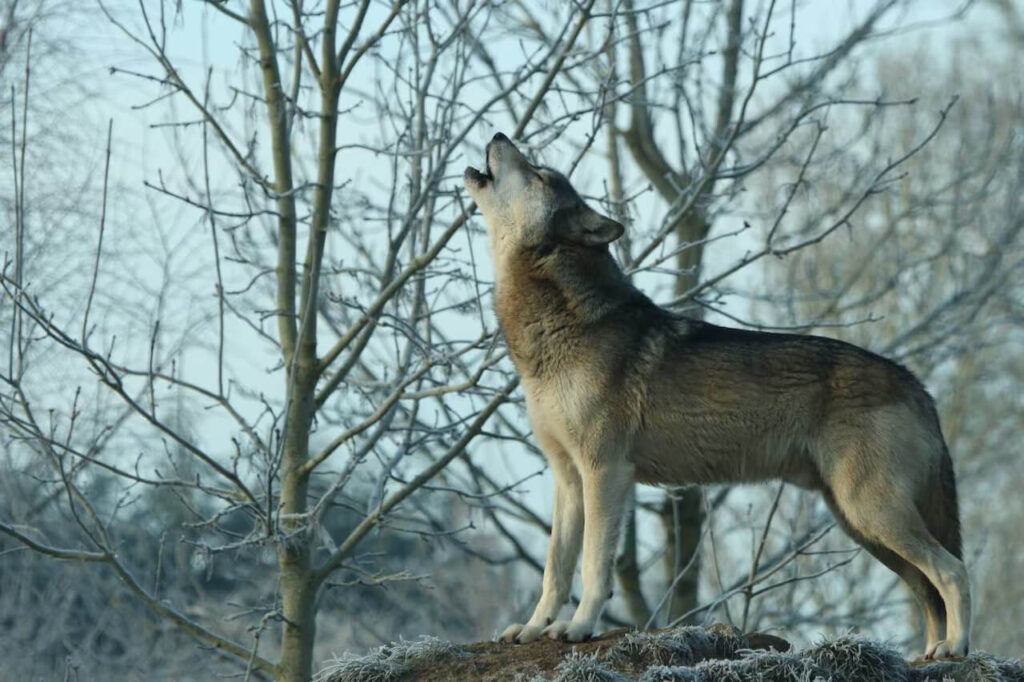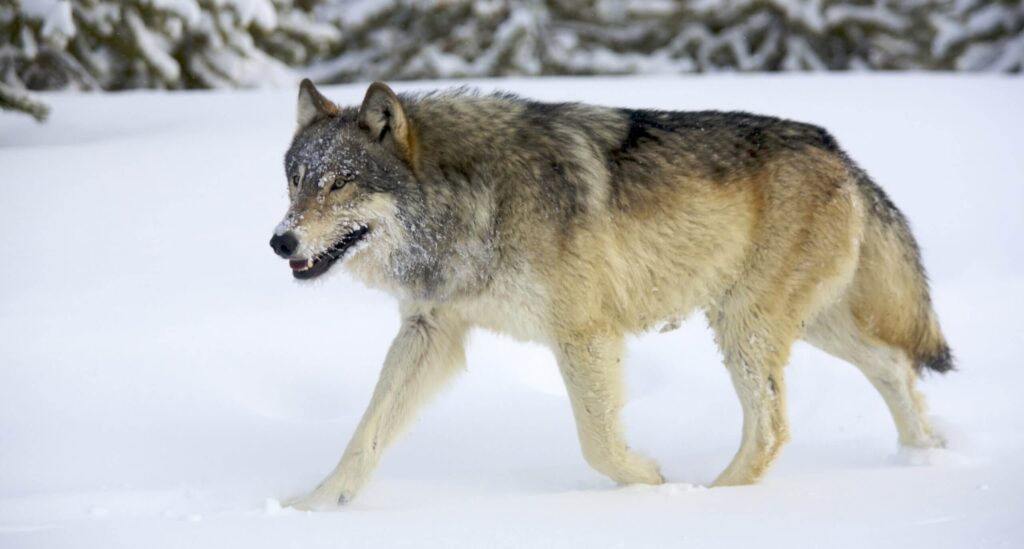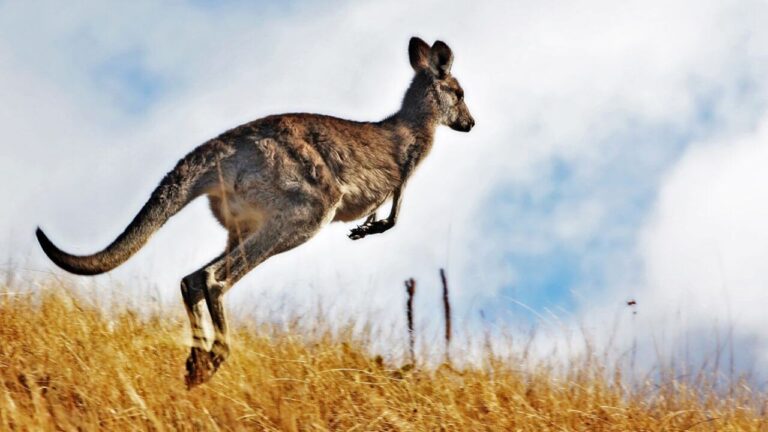Interesting Facts About Wolves: Can Wolves Purr?
In the quiet of the wilderness, one might expect to hear the haunting howl of a wolf echoing through the trees, but what if I told you that these majestic creatures possess a softer side? The question Can wolves purr? may seem far-fetched at first, yet it invites us to explore the rich tapestry of vocalizations and behaviors in the animal kingdom. While purring is often associated with our feline friends, wolves communicate in ways that can be just as nuanced and intriguing.
Imagine standing on a misty mountain ridge as a pack gathers nearby, their voices weaving together in harmonious calls—could there be more to their communication than we realize? As we delve into this captivating inquiry, we’ll uncover not only the mechanics behind wolf sounds but also what they reveal about social bonds and survival strategies in this apex predator’s world. Join us on this journey into wildlife communication as we unravel whether wolves indeed have a hidden talent for purring.
What Sounds Do Wolves Make?
Wolves are often associated with the iconic howl, but their vocalizations encompass a diverse array of sounds that serve various purposes. These intelligent creatures communicate through barks, yips, whines, and growls, each conveying distinct messages within their social structure.
Interestingly, the frequency and context of these sounds can vary dramatically between different wolf populations. Research suggests that regional dialects exist; wolves from one area may produce variations in their howls compared to those from another region. This phenomenon not only highlights their adaptability but also raises intriguing questions about social learning among packs. By understanding these complex vocalizations, we gain profound insights into wolf behavior and the intricate dynamics that govern their lives—reminding us that communication transcends mere words in the animal kingdom.
Howls
Wolves communicate profoundly through their howls, a powerful and haunting sound that reverberates across vast distances. This vocalization serves multiple purposes, from signaling their location to gathering the pack during hunts or marking territory. The unique blend of harmony and primal instinct in a howl creates a symphony of social bonding within the pack, reinforcing connections among its members.

Interestingly, each wolf has its own distinct howl, shaped by individual characteristics and circumstances—much like a fingerprint in sound. Researchers have observed that different pitches and lengths can convey specific emotions or intentions, allowing wolves to express everything from excitement to warning signals.
Listening closely reveals an intricate language at play; these sounds are not mere echoes in the wilderness but rather crucial tools for survival and community building within packs. Thus, the next time you hear a wolf’s howl piercing through the night air, remember—it’s more than just noise; it’s an essential element of their complex social structure and environmental navigation.
Barks
Barking is one of the most recognizable sounds wolves make, yet it often surprises people to learn that it’s not their primary means of communication. Unlike domestic dogs, whose barks are frequent and varied depending on the situation, wolves use barking in specific contexts. A wolf’s bark typically serves as a warning or a method of alerting pack members to potential threats. This sharp sound can cut through dense forests, carrying messages across considerable distances.
Interestingly, wolf barks tend to be shorter and more intense than those of dogs, reflecting their purpose-driven nature. When a wolf barks, it’s quite strategic—maybe signaling danger or initiating contact with other pack members during hunts. Observations have shown that a mother may even use distinctive barks to call her pups back to her side after they’ve wandered too far away—a poignant reminder that beneath this fierce exterior lies strong familial love and social bonding within packs. In essence, each bark is not just noise; it’s an important part of the wolf’s survival toolkit.
Growls
Growls are among the most primal and instinctive sounds wolves produce, serving as powerful communication tools within their social structures. When a wolf growls, it sends a clear signal of dominance or warns potential threats to back off, all while conveying emotions ranging from irritation to aggression. This low-frequency vocalization cuts through dense forest ambience, allowing pack members to stay connected even in the thickest cover.

However, not all growls are created equal. A deep, resonant growl can indicate a confrontation is imminent, signaling that the wolf feels threatened or protective of its territory. Conversely, softer growling tones might emerge during play or bonding interactions among pack mates—showing that this complex language goes beyond mere intimidation. By examining these subtle variations in tone and context, we can appreciate how nuanced wolf communication truly is; every growl provides insights into their social dynamics and emotional landscapes.
Whines
Whines in wolves are often misunderstood as mere vocalizations of distress or discomfort, but they serve a much more nuanced purpose within the pack dynamics. These plaintive sounds can indicate a range of emotions—from seeking attention and affection to expressing anxiety about being separated from the group. Unlike barks, which are assertive and territorial, whining embodies a vulnerable yet socially interactive form of communication that reinforces bonds among pack members.
When a wolf whines, it may be signaling its position or mood to others, fostering an atmosphere of cohesion within the pack. This behavior is especially prominent in pups, who use whining to communicate their needs and desires effectively to adult wolves. Moreover, these sounds can act as social glue—encouraging older members to engage with younger ones and ensuring the survival of vital relationships essential for collaborative hunting and nurturing. Each whine encapsulates not just emotion but an intricate layer of social intelligence that highlights the complex interconnections fostering unity in these remarkable creatures.
Why Do Wolves Howl At Night?
The haunting chorus of wolves howling at night serves as a powerful reminder of their role in nature’s symphony. While many believe howling is merely a call to communicate, it also plays an essential part in marking territory and reinforcing social bonds within the pack. As darkness envelops their environment, wolves harness the cover of night to vocalize—a strategic move that minimizes the risk of competition from other predators while maximizing their ability to be heard over long distances.

But what if there’s more beneath this iconic sound? Howling can also be seen as a ritualistic expression that transcends mere survival instincts. During those moonlit hours, packs may gather to synchronize their voices—creating not just an announcement but a display of unity and strength. This communal action reinforces relationships among pack members, reminding them that they are never truly alone in the wilderness. In this way, each howl resonates with emotional depth, echoing through the forest like a heartbeat in harmony with nature itself.
Why Can’t Wolves Purr?
Wolves, with their haunting howls and fierce presence, are mesmerizing creatures of the wild. Yet, one trait they lack is the ability to purr—a vocalization often associated with domestic cats and some other felines. This absence can be traced back to their evolutionary differences. While cats have a specialized laryngeal structure that allows them to produce that soothing rattle, wolves thrive on more guttural sounds necessary for communication within packs and territorial defense.
Instead of purring, wolves employ varying vocalizations like growls, whines, and howls to express emotions and establish social bonds. Their intricate vocal repertoire serves essential functions in coordinating hunts or signaling location during night-time prowls. Interestingly, this absence of a melodic purr only adds depth to their mystique—each howl reverberates through the forest as an emblem of unity and survival rather than mere comfort or contentment found in house pets. In many ways, it’s a reflection of their relationship with nature: fierce adaptability contrasted against softer signals of companionship.
How Do Wolves Communicate With Each Other?
Wolves communicate through a rich tapestry of vocalizations, body language, and scent marking that showcases their social complexity. Their infamous howls, often considered the hallmark of wolf communication, serve not only to rally pack members but also to send messages over long distances. Each howl can convey different meanings depending on pitch and duration—think of it as a linguistic dialect unique to each pack’s identity. The haunting sound echoes across the wilderness, fostering a sense of belonging among wolves while simultaneously deterring intruders.

Beyond vocalizations, wolves employ nuanced body language that speaks volumes without uttering a word. The position of their ears, tails, and even facial expressions can indicate hierarchy or intentions; for instance, an alpha may hold its head high while lower-ranking members might display more submission by lowering theirs.
Scent plays an equally vital role in their communication repertoire—through urine marking and feces deposits, wolves share information about territory boundaries and reproductive status with other packs. This coalescence of auditory signals, physical posturing, and olfactory cues illustrates not just survival tactics but also deep emotional connections within the pack dynamic. In essence, every interaction between these magnificent creatures embodies a dialogue that is both sophisticated and instinctual—a testament to their evolutionary adaptation as social hunters in the wild.
How Do Wolves Show Affection?
Wolves express affection through a complex tapestry of behaviors that go beyond mere vocalizations. One of the most heartwarming displays is the act of grooming, where wolves will often lick each other’s fur. This behavior not only helps to strengthen social bonds but also demonstrates trust and care within the pack. By cleaning each other, they’re effectively nurturing their relationships and signaling their commitment to one another.
Another fascinating way wolves show affection is through playful interactions, especially among pups. These spirited play sessions are crucial for developing social skills and reinforcing group cohesion. Adult wolves may partake in this bonding ritual, which can include gentle nipping or chasing, embodying their joy and connection with each other. Through these interactions, wolves communicate a sense of safety and comfort within their family unit, reminding us that love in the animal kingdom can be expressed in profoundly intricate ways—often paralleling our own experiences of friendship and loyalty.
Do Wolves Cuddle?
Yes, wolves do engage in behaviors that resemble cuddling, especially within their packs. Wolves are highly social animals that rely on strong bonds to maintain their pack structure. They often engage in physical contact, such as nuzzling, grooming, and lying close together. These actions reinforce social ties and provide comfort and warmth among pack members.

Cuddling-like behavior is particularly common among family groups or during times of rest and relaxation. Young wolves frequently play and snuggle with each other, which helps them develop social skills essential for survival.
Readmore: Explore Animals That Are Shy In The World.
Final Words
Do wolves purr? While wolves do not purr in the same manner as domestic cats, they exhibit a range of vocalizations that serve similar communicative purposes. These sounds—including growls, howls, and whines—help strengthen social bonds within packs and convey emotional states. Understanding these vocalizations enriches our appreciation for the complex social structures and behaviors of wolves in their natural habitats.
As wildlife enthusiasts and conservationists, we must continue to observe and study these magnificent creatures to foster a deeper respect for their role in ecosystems. Let us advocate for their protection and ensure that future generations can experience the wonder of wolves in the wild.
FAQs
Can Wolves Purr?
Wolves do not purr in the same way that domestic cats do. While cats have a unique ability to produce a continuous sound by rapidly contracting and relaxing their laryngeal muscles, wolves lack this anatomical feature. Instead, wolves communicate through a variety of vocalizations such as howls, growls, barks, and whines.
What Animals Can Purr?
Domestic cats are known for their purring, but other animals can purr too. Big cats like cheetahs, cougars, and bobcats can make this sound. Some small wild cats, such as servals and ocelots, also purr. Certain rodents, like guinea pigs and some rabbits, can produce purring sounds as well. Interestingly, some reptiles, like monitor lizards, have been seen making a similar noise when they feel happy.
What Noises Do Wolves Make When Happy?
Wolves show happiness with different sounds, mainly playful howls and barks. When they are joyful or excited, they make short, high-pitched yips or playful growls. These sounds often happen when they play or chase each other. Besides sounds, wolves also use body language to express happiness. A relaxed stance, wagging tails, and playful nipping indicate that a wolf is feeling good.
- Explore Top 16 Interesting Animals That Walk On Two Legs (With Pictures) - September 19, 2024
- Explore 16 Interesting Animals That Are Independent (Images Included) - September 15, 2024
- Explore Interesting Top 10 Animals That Waddle (With Pictures) - September 15, 2024






